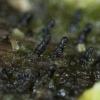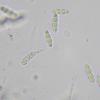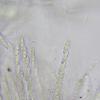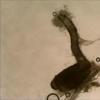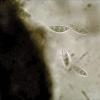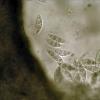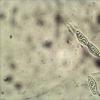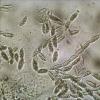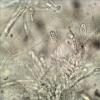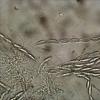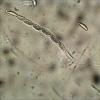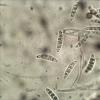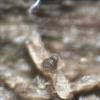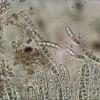
16-01-2013 22:43
Peter ThompsonHappy New Year to you all.I have found a sample of

15-01-2013 22:43
Bonsoir, Good eveningI found this species on a cul

16-01-2013 01:08
Hi to all: Though I do not know his anamorph and I

12-01-2013 18:20
Gernot FriebesHi,in the above mentioned book there should be a d

14-01-2013 00:00
 Yannick Mourgues
Yannick Mourgues
Found today this Mollisia.Can't be able to find th

14-01-2013 01:37
 Pérez del Amo Carlos Manuel
Pérez del Amo Carlos Manuel
Encontrados en agujas sobre el suelo de Pinus pina

14-01-2013 12:42
Reza ShaianDear friends I have dried specimens, from forest
A few months ago I found this interesting fungus on lignum of a decaying deciduous log (I think Quercus). Unfortunately I have not a found a fitting match for it so far. Hopefully someone here can point me in a direction where to look or maybe knows what it is. I find many similarities with the genus Fluminicola and members from Annulatascaceae, but those are all known from freshwater habitats while this collection is terrestrial.
Perithecia fully to almost fully immersed in host substrata, black, 375 um. wide, with a protruding, cylindrical, neck which becomes superficial, up to 1000 um long and 175 um wide. Peridium width and texture of perithecial wall yet to be examined, did not get a good section through so far. Paraphyses abundant, longer than asci, hyaline, 5 – 5,5 um. at the base and tapering to 2 – 3 um., constricted at the septa. Asci cylindrical, 8-spored, spores uniseriate arranged, often slightly overlapping, thin walled, with a tapering stipe, (145 -) 150 – 175 (-203) x 7,5 – 10 um., apical annulus 2,5 – 3 wide x 1,5 – 2 um. high. Ascospores becoming 3-septated when mature, each cell within spore filled with one large oil drop, smooth, hyaline, flattened at one side, ellipsoid to fusiform and (20-) 22 – 25 x 5 – 6 (-7) um.
I have some more detailed photographs is wished, but those are too big to upload right now. But I think this will give a good understanding for now.
Looking forward to your responses!
Best wishes,

your fungus seems close to Ceratolenta caudata but with larger ascospores.
I am sending you privately the paper in which this genus is introduced along with Platytrachelon.There is a useful key to long-beaked genera of Sordariomycetes.
Cheers,
Jacques

For me these photos are recognisable I also did find these species on a piece of lumber in 2015 soaked with water from a chestnut tree placed on the forum but never got any response.
I did find the following documentation on the internet:
Teleomorph of Rhodoveronaea (Sordariomycetidae) discovered and reevaluation of Pleurophragmiumu. Published in Fungal Diversity 36: 129-139 and the species reported in this topic could well be Rhodoveronaea varioseptate.
Perithecia: completely hidden in wood only half of the neck is visible.
Body is horizontaly positioned most of the time 268 um long and 135 um high, neck 353x41 um.
Paraphyses: cylindrical non septated inflated at the top 3.6-4.2 um, top 6.5-6.7 um filled with particles.
Asci: 8-spored; 152-165x7.0-8.0 um (expanded); originally 136x7 um for spore bearing part and a long stalk of 74 um. Probably to keep the size of the ascus small spores are ordered with the flat side opposite of each other so they are connected
Spores: uniseriate; septated by 3 septae; 17.6-20.5x5.2-5.7 um; filled with oil drops 2 big ones in the center and 2 small ones on each end, spores do have a flat bottom observed in side view.
Eventhough the spores are immatured in the last photos the spore sizes remain the same
Greetings,
Joop

you are right, your fungus is indeed very similar to Jannes' one, with slightly larger ascospores.
I ruled out Rhodoveronaea because of its conical vs cylindrical necks but intraspecific morphological variations in these recently delimited genera are poorly known.
Without support from asexual states and DNA sequences the generic placement of both collections may remain uncertain.
Cheers,
Jacques

Good morning Jacques,
Thanks for the info I did send an e-mail to Martina Reblova for assistance to solve this determination problem hopefuly she can help us.
Furthermore I did find about 4 species in that piece of wood with long and/or short necks having the same kind of spores only with more septa.
Photos: perithecia 215x211 um with a short neck 107x63 um and spores measuring 21.8-23.6x4.0-4.8 um, uniseriate, 5-septa, flat side on the bottom.
Greetings,
Joop

